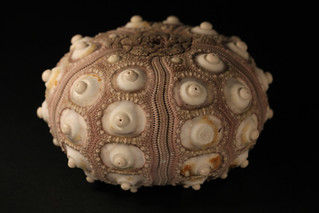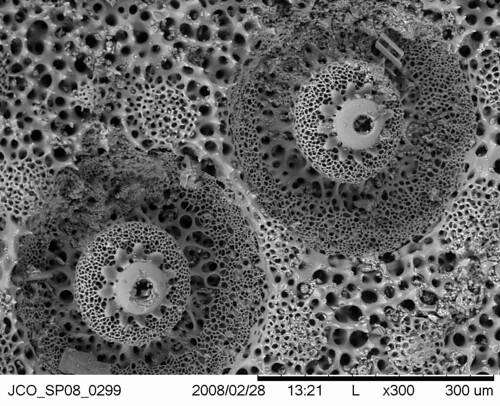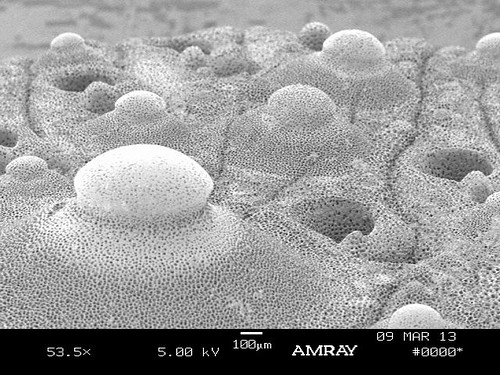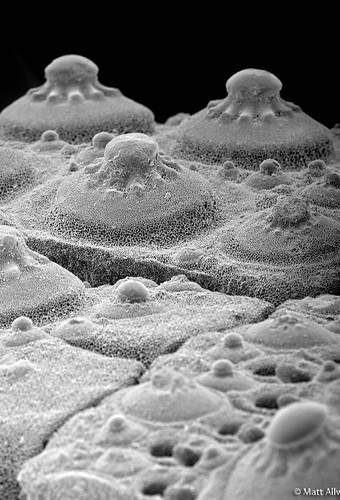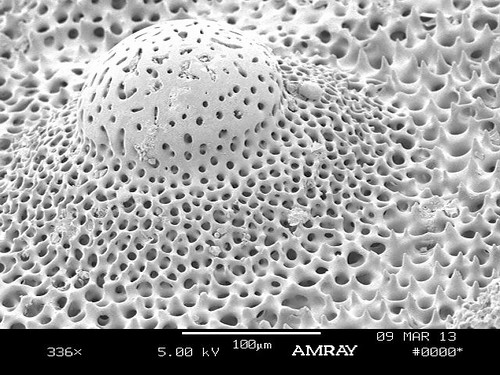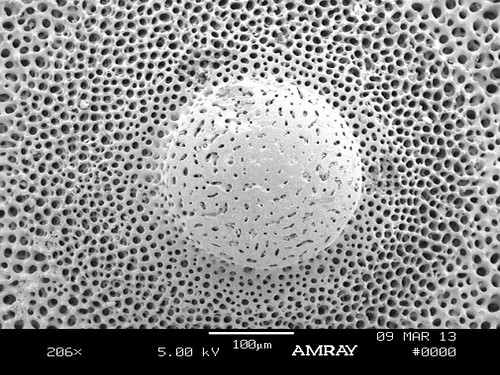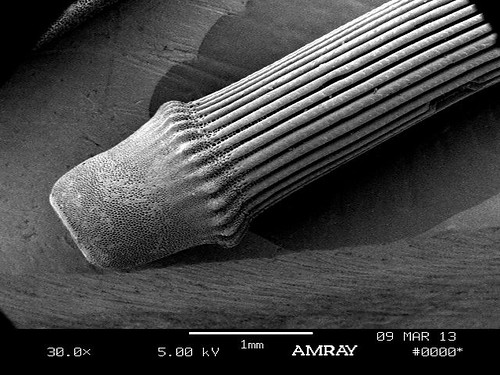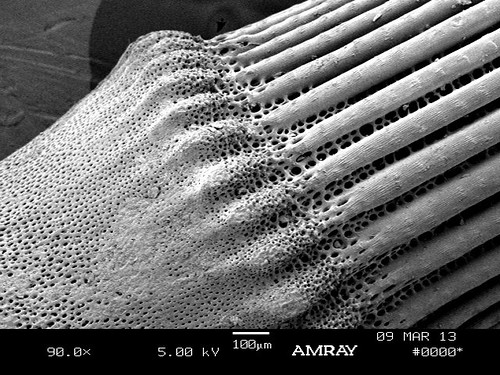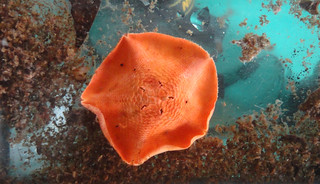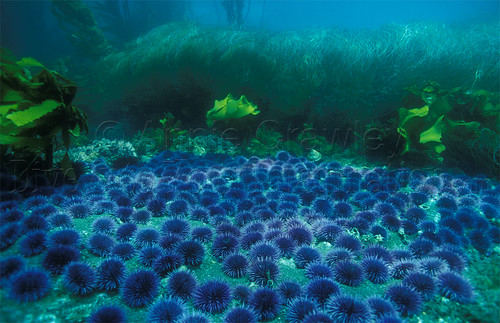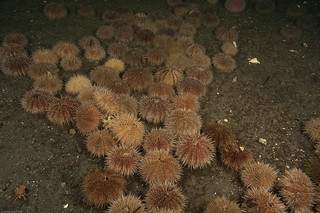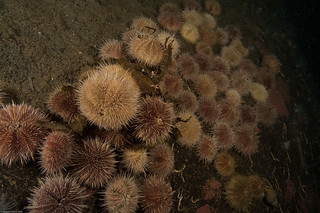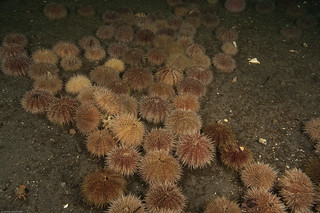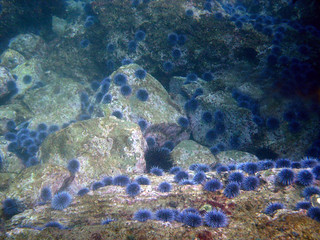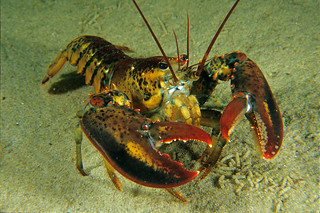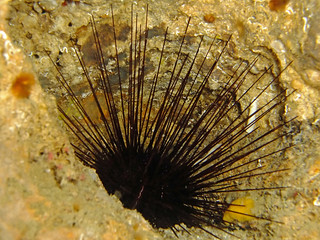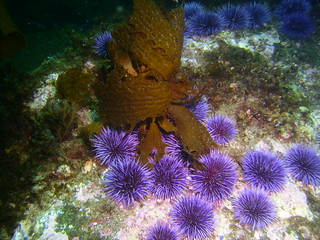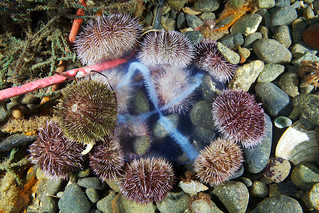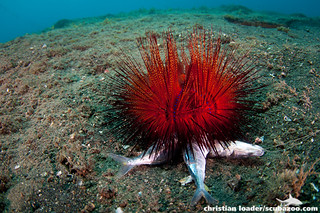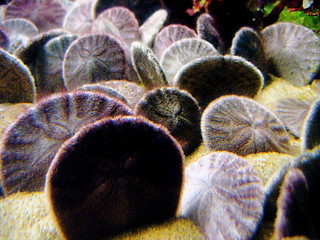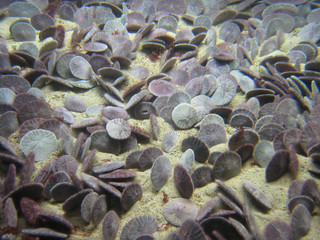 |
| thanks to MBARI! |
People are always fascinated by how animals eat and, I think, the weirder the better. Starfish have one of the most distinctive feeding modes of all animals and I think, that's why people get fixated on how they consume their prey.
How does one figure out the role..and indeed, the importance of these species in such far away and forboding habitats??
1. The Starfish
 |
| Fig. 1 from Gale et al. 2013 |
Ms. Gale's research focused on seven deep-sea starfish species from the North Atlantic:
A.
Ceramaster granularis
B. Ctenodiscus crispatus-aka the mud star (learn more about it here)
C. Hippasteria phrygiana (learn more about it here)
D.
Leptychaster arcticus
E.
Mediaster bairdi
F.
Novodinia americana-a brisingid
G. Zoroaster fulgens (more about Zoroaster here)
but also had some feeding notes on this weird guy..
Tremaster mirabilis! (
about which very little is known)
Most of these species occur in a primary range of about 500 to 1500 meters, but some can get relatively shallow. Most are difficult to study and live on the deep-dark sea bottoms...
2. Figuring out feeding
There's generally TWO ways to study feeding:
- Directly: i.e., you watch a species consuming its prey (or whatever food) and voila! You have a direct feeding observation.
- Indirectly: You have something which provides inference about what the animal has already consumed. Look at the gut contents or something similar...
In the old, old days, figuring out the feeding ecology of deep-sea species was difficult. Specimens were collected via net-and usually brought up badly damaged. The animals were mostly dead and had often emptied all of their gut and stomach contents. Rarely did you have an opportunity to see the animal interacting with any possible prey items. Any interactions you might have spied could have been caused by the trawl net scooping up any and all of the bottom fauna...
In contrast, I think Ms. Gale et al's paper has acquired some great information using some modern techniques and good ol' fashioned detective work!
Direct Observation So, the most obvious and direct way to observe feeding is by watching it! These days, submersible robots aka ROV's (Remotely Operated Vehicles) are one of the main platforms for these types of observations. I've done some similar
work in the Pacific (here)
 |
| Fig 9A from Gale et al. 2013 |
This is
Hippasteria phrygiana, a widely occurring cold-water/deep-sea coral (and cnidarian) predator, but Gale et al. observed several other species from the deeps, about 500-1100 meter depths, of the North Atlantic.
Several species were observed as predators for the first time, whereas others were confirmed. For example,
Novodinia is
a brisingid with a documented suspension-feeding mode and we saw more of that in Gale et al. 2013.
Gale et al. also reported feeding for
Tremaster for the first time! Feeding on coral...
Laboratory Feeding Experiments
As a complement to the direct observations, Gale also performed several laboratory feeding experiments and was able to observe several direct feeding moments!
Predictably,
Hippasteria fed on various cnidarians, including sea pens and other deep-sea cnidarians.
Whereas
Ceramaster fed on sponges..
But not all the prey allow the predators to just...eat them. Some, like the sea anemone
Hormathia
nodosa
and the deep-sea coral Flabellum alabastrum
used their tentacles (which all have stinging cells) as a defense against the oncoming hunger dogs! And this was effective against the more timid Ceramaster but not against Hippasteria. Flabellum was fed upon by Hippasteria VERY quickly (in 18 minutes)..
Indirect Evidence. This is where some newer techniques shows us some cool ecological stuff!!
Stable Isotopes!!
Here i
s a video that explains the basics of stable isotopes but basically what it comes down to is this: elements like nitrogen (N) and carbon (C) undergo changes as they pass through different ecological levels in the environment.
In doing so, they become kind of like a "fingerprint" for a particular kind of ecological role. So, for example, species with a stable isotope N (Nitrogen) value of about 16, but w/ Carbon value of about -14 (
Hippasteria, Ceramaster and
Mediaster) are higher within the overall trophic relationship among these asteroid species.
 |
| Fig. 6 from Gale et al. 2013 |
You've seen
Hippasteria, but here's
Ceramaster granularis
and
Mediaster bairdi
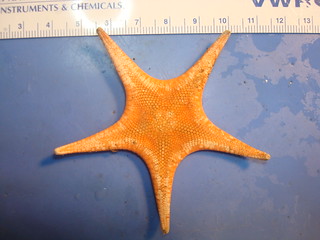 |
| Image by K. Gale |
All the other species, including
Novodinia americana, Leptychaster arcticus, Ctenodiscus crispatus and
Zoroaster fulgens display lower values which would be consistent with their previously thought of feeding modes as suspension feeder (the brisingid) and deposit feeders/detritivores (mud stars, including
Leptychaster and
Ctenodiscus) and
Zoroaster.
Gut Contents & Prey Items!
One other indirect way of looking at food items? Gut contents. What were they eating?
Ms. Gale did a LOT of work looking through the guts of many starfishes.. Much of how they fed is based on detective work. For example, many animals such as deep sea gorgonians and such, after being digested leave only skeletal bits called sclerites.
Fortunately, these can be used to identify the animals with some accuracy. Curiously
Hippasteira also had some crustaceans in its gut..
 |
| Figure 3 from Gale et al. |
One of the subject animals,
Zoroaster fulgens has been one of the more mysterious deep-sea starfish species in my experience is an infaunal predator, that is, a species which eats animals living in bottom mud and sediments. A related zoroasterid called
Doraster is shown here with a snail in its mouth with snail food in the red circle
Gale et al reiterate the importance of the feeding ecology of many of these species...
- Hippasteria is a widely occuring asteroid which likely affects coral populations
- Ctenodiscus-the mud stars occur in LARGE numbers, up to ~6000 individuals per hectare and influence the sediment as they move around through it feeding on mud..
- Suspension feeding asteroids such as Novodinia capture food from the water column that would ordinarily not be made available to bottom feeders
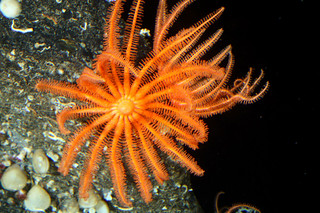 |
| not N. americana. Image by NOAA National Ocean service |
I've recently discussed some recent observations of a seemingly innocuous species,
Porania pulvillus as a predator rather than a passive ciliary feeder. Understanding deep-sea ecosystems is an exciting endeavor, who knows what we'll find! Simple things like feeding are intriguing and interesting-but poorly known. What will the important impacts of these species be down the line?
But even BASIC knowledge such as this is a complex and time-intensive process. It starts with work like this...

